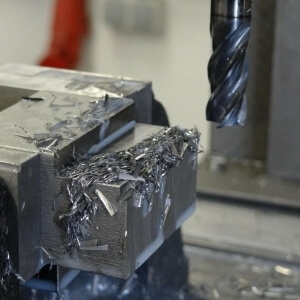
With the advent of CNC machining and other automated processes, modern machine shops are advancing at a rapid pace. These processes not only assure extreme precision and reduces the margin of error, but they also improve the speed of the machining process, thereby increasing productivity. However, when it comes to the basics of machining, the processes, though automated, are pretty similar to their conventional counterparts. Here, 3 such fundamental machining processes will be explained in detail.
In machine turning or turning, the workpiece or the product to be manufactured is attached to a machine called the lathe and rotated at high speeds. The rotating piece is then worked by a cutting tool that moves linearly, thereby removing excess parts of the workpiece to reveal the final product. Turning can be either done manually or through a CNC machine. To avoid the constant supervision problems of the former, most machine shops opt for the latter, wherein they simply enter various parameters like speed, movement and other dimensions in a computer to get the desired result.
In cases where a workpiece requires holes of any kind, drilling processes are used, although milling can also achieve a similar result. The drilling machine comprises mainly of the cutting tool, known as the drill bit, which is designed to not only pierce the workpiece but also remove any chips away from the product to keep the debris to a minimum. Most conventional drilling machines work perpendicular to the workpiece. However, in some cases angular drilling might be necessary, requiring special modifications to the machine. Lastly, much like turning, this process can also be automated.
Basically a finishing process, milling is a cutting process where a single or multi-point cutting tool is rotated at high speeds, and the workpiece stays stationary. It can be further sub-classified as face milling and peripheral milling. In the former, the tool cuts a flat surface by removing a layer of the product, whereas, in the latter, the tool is used to cut threads or slots. It is known as a finishing process because it is mostly performed after a preliminary machining operation to better define the features of a workpiece.
Thus, these are the 3 most fundamental machining processes that most machine shops can perform with high precision.
You can always count on us at RWD Tool & Machine for optimal precision and CNC machining services. Contact us today to learn more about everything we can do for you.